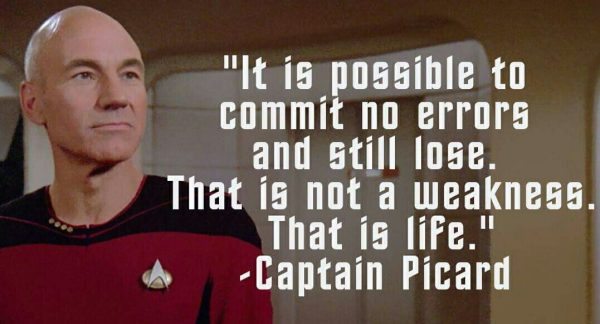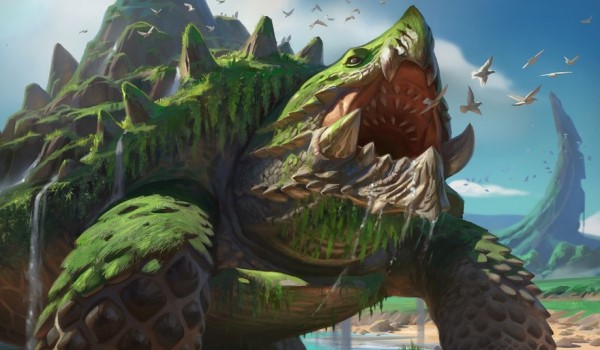Are you a Quiet Speculation member?
If not, now is a perfect time to join up! Our powerful tools, breaking-news analysis, and exclusive Discord channel will make sure you stay up to date and ahead of the curve.
The year was 2011. I was at my local game store excited to play a freshly-drafted Innistrad deck. Bloodline Keeper, Sever the Bloodline, Kessig Cagebreakers, Moan of the Unhallow were the headliners. Additional removal backed up my threats in the form of Dead Weight and multiple copies of Victim of Night. It was a masterpiece. I remember it well.
The first round started uncomfortably as my opponent's first play was Invisible Stalker. While my removal could not interact with the hexproof creature, I was confident I could race it with my late-game power. Unfortunately, his next play was the last card that would matter: Butcher's Cleaver. On turn four I carefully read both pieces of this combo. Much to my dismay, the unblockable, untargetable threat was, in fact, human and did, in fact, receive lifelink. I continued to play as the gap in life totals expanded. As I'm sure you can guess, game two started and ended in an identical fashion.

This is a quintessential example of "being cheesed out." You had a good deck but it was irrelevant. An opponent did something that you couldn't interact with and it assured any sequence of draws would be meaningless. Though it is frustrating to lose this way, this tradition has a glorious history and remains present in modern drafts.
Hexproof, Evasion, and Hopefully Not Lifelink
Losing in a Snap in Dominaria
A card as simple as Giant Strength offers a lot to a new player. For the bargain of two mana, you can make your creature the biggest on the board. It's an exciting feeling—until a more experienced player puts both the creature and the aura in the graveyard with a single removal spell. When your well-dressed threat is bounced, it feels even worse. However, Magic: the Gathering's least popular mechanic, hexproof, minimizes this downside.
In the Dominaria limited format, removal was plentiful and the commons were generally weak. Games ended by looping kicker cards like Ghitu Chronicler and Soul Salvage. But no amount of Eviscerate or Vicious Offering could slow down Cold-Water Snapper. The only problem was that it moved pretty slowly on its own. A lumbering turtle could be double-blocked easily. However, give that turtle wings via Arcane Flight and you just made a game plan from two late picks. If you were fortunate enough to grab a copy of On Serra's Wings you made your plan harder to race, as the lifelink quickly buried opponents.
Snapper holds the ground well until you enable the combo. It's a common, as is Arcane Flight, and neither was ever particularly high picks, meaning you could expect to see (or even wheel) these cards. These are the cheesy combos that can put a format on its head.
Cheese Like These
Cheesy combos should usually be seen as a backup plan in the drafting and deck-building phases. Decks need a way to win, and that's what these combinations provide. Invisible Stalker and Butcher's Cleaver are not as desirable as the dominant rares or potent uncommons you might take early and build around. They take up more slots in deck-building and are typically less flexible. These combinations are valuable because they provide a game plan and can generate wins. Sometimes these pieces are good on their own, without the combo, and sometimes they slot nicely into strong archetypes.
Quick and Strong in Ixalan
Ixalan was an incredibly aggressive format. The raid mechanic incentivized attacking and the removal was slow and clunky. You wanted as many two drops as you could find. The most coveted deck was GU Merfolk, an aggressive deck that snowballed its advantage, using combat tricks and evasion. The deck was powerful on its own, but as hamburgers and pizza have taught us, everything is better with cheese.
Flying Fish
Essentially, the games would go back and forth trading damage, but once the Jade Guardian took to flight, the game ended. One with the Wind shot up pick orders because of aggression and the lack of quality removal. In reflection, this set was primed for a cheesy combination like this, though one might imagine the aggressive nature of the format would pressure combos. However, in this instance, both pieces are optimized in an aggressive shell.
The Cheese of Yesteryear - Today!
It is fun to complain about cheesy combos like the ones we've looked at through Magic's past. However, there is value in recognizing their inherent strength. While I don't want to lose to a hexproof creature and an aura, I have no issues winning with them. And while Streets of New Capenna (SNC) doesn't give us as easy of a puzzle to solve, we can find a home for its cheesiest combo in the format's strongest family: the Brokers.
White Cheddar? Blue Cheese?
Illuminator Virtuoso is already great in this format. You want two drops and this one plays very nicely with Backup Agent, Revelation of Power and Majestic Metamorphosis. Security Bypass is a dubious inclusion as its 54% game-in-hand win rate is relatively low for blue cards. However, let's theory-craft a little bit. Assuming optimal conditions, you play the aura, triggering the first instance of connive, making the Virtuoso a 2/2. The subsequent attack threatens five damage on turn three, with another nine on board for turn four (thanks to double-strike). This assumes you are pitching spells to connive. Actual mileage may vary.
Hexproof? Where We're Going, We Won't Need Hexproof
Now, we still face the timeless aura conundrum, as our attacker lacks safety from two-for-one removal spells. Fortunately, SNC lets us build our own with its suite of one mana protection spells. Not only do Boon of Safety and Slip out the back defend our burgeoning rogue, they provide an additional instance of connive, potentially growing our creature further.
Uncheesing Auras?
There Is Something Here
Finally, Sticky Fingers has a lot going for it. It provides (minimal) evasion and generates value each time it makes contact. However, the good people at Wizards of the Coast have really found something in the design here. The fact that this card replaces itself when you would otherwise be two-for-one'd by an opponent's removal spell is wonderful. This is a great design space for auras. It makes them more playable and less swingy. While the memories of "getting there" with a suited-up Wind Drake make for good stories, they aren't beloved fixtures of a good format.
Cheddar Luck Next Time
Building these combinations can help you win games, but you should never aspire toward them. Most often they are a backup plan for when deck-building and drafting go poorly. Every time you put an aura in your deck, there is a risk of ruin. These types of win conditions are famously inconsistent. However, when you know you need something to help you win games, try to play these cards in a shell that will support them.
When you take a look at each new format, keep an eye open for the auras and equipment. They usually go overlooked. But somewhere in that spoiler will be a strong match for it. So what are your best cheese-em-out stories or noteworthy combos? Let me know about them in the comments.





